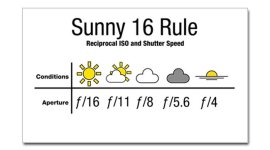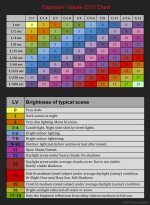For shooting outdoors on a bright sunny day the basic rule is: ISO 100, 1/125 @ f/11.
To adjust aperture or shutter speed for varying conditions, apply exposure reciprocity:
f/11 @ 1/125 = f/8 @ 1/250 = f/5.6 @ 1/500 = f/4 @ 1/1000, etc.
Or go to ISO 200 and double, or halve, one of the other values to compensate:
ISO 200: 1/125 @ f/8 = 1/250 @ f5.6 = 1/500 @ f/4, etc.
It's all a matter of remembering that each full stop halves, or doubles, exposure and that each full increment in shutter speed does the same thing. What complicates matters is that modern DLSR's often use 1/2 or 1/3 increments when adjusting ISO or shutter speed. I don't use 1/3 increments on my camera because I'm used to working in full stops. I can calculate using half-stops fast enough but using one-third stops is not something I've taken the time to master.
....


